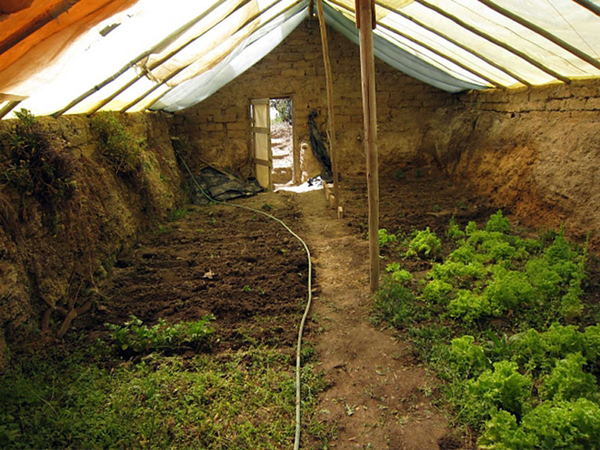Want to learn how to build a cheap house? Look no further. Let me ask you; how would your life change if you never had to pay rent or interest on a mortgage again? I bet it would take a significant weight off your shoulders. It sure would for me.
You’re not alone, in fact today most people in “civilized” parts of the world don’t own their homes but are indebted to banks or rent from a landlord. But it has not always been this way, as Henry David Thoreau so truthfully writes in his book Walden:
In the savage (Native American) state every family owns a shelter as good as the best, and sufficient for its coarser and simpler wants; but I think that I speak within bounds when I say that, though the birds of the air have their nests, and the foxes their holes, and the savages their wigwams, in modern civilized society not more than half the families own a shelter. In the large towns and cities, where civilization especially prevails, the number of those who own a shelter is a very small fraction of the whole. The rest pay an annual tax or this outside garnment of all, become indispensible summer and winter, which would buy a village of Indian wigwams, but now helps to keep them poor as long as they live.
Is this the best humanity can do?
Is it impossible to imagine a future where humans, just as other animals, own their shelter free and clear and don’t have to pay a “tax” their whole lives just to stay protected from the elements?
Of course not. This is crazy!
In the list below you’ll find examples of homes that “savage” people throughout the world built with their own hands using locally available materials that Nature provided for free. No mortgage or rent required.
Most of the examples on this list are small house designs. They are small because a small house takes less fuel to heat, less time and building materials to build, and for some of the more portable designs a small home is much easier to move.
What you take away from this list is up to you, but I have no doubt there’s a lot to learn from how our ancestors lived in harmony with their surroundings and adapted perfectly to their environments, no matter how harsh.
1. The Tipi
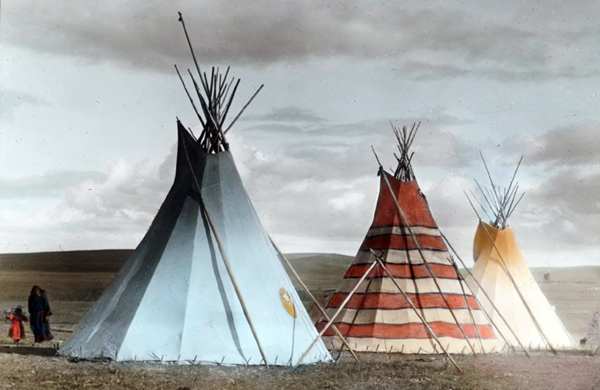
Tipis (also spelled Teepees) are tent-like American Indian houses used by Plains tribes. A tepee is made of a cone-shaped wooden frame with a covering of buffalo hide, and originally they were up to 12 feet high. Like modern tents, tepees are carefully designed to set up and break down quickly. As a tribe moved from place to place, each family would bring their tipi poles and hide tent along with them.
Plains Indians migrated frequently to follow the movements of the buffalo herds, and it’s said an entire Plains Indian village could have their tipis packed up and ready to move within an hour.
2. The Lavvu
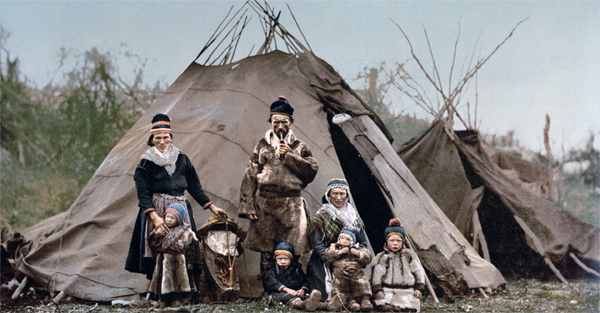
Sami family infront of their lavvu, 1900
The Lavvu has a design similar to a Native American tipi but is less vertical and more stable in high winds. It’s a temporary shelter used by the Sami people living on the treeless plains of northern Scandinavia, and it’s made of wooden poles which are covered in reindeer hides or, more recently, textile.
Modern designs of the lavvu have replaced the wooden poles with aluminium poles and heavier textiles with lighter fabrics. Today some people choose to heat the lavvu with an oven instead of an open fire and that has the benefit of producing less smoke, but it also produces less light making it quite dark inside.
3. The Wigwam
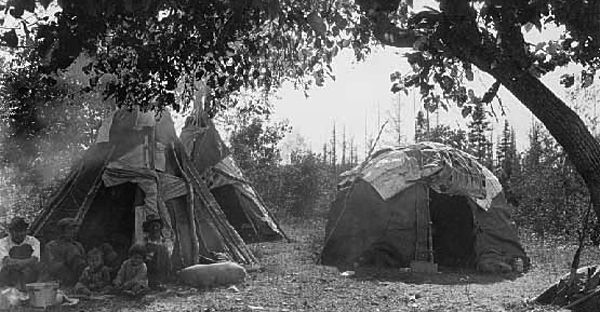
Wigwams, sometimes also known as birchbark houses, are Native American houses used by Algonquian Indians in the woodland regions.
These shelters are small, usually 8-10 feet tall, and they’re formed with a frame of arched poles, most often wooden, which are covered with some sort of roofing material ranging from grass, bark, brush, mats, reeds, hides or textile. The frame can be shaped like a dome, like a cone, or like a rectangle with an arched roof. The curved surfaces make it an ideal shelter for all kinds of conditions, and while wigwams are not portable they’re small and easy to build.
A first hand account from 1674 of Gookin, who was superindendent of the Indian subject to the Massachusetts Colony, says…
“The best of their houses are covered very neatly, tight and warm, with barks of trees, slipped from their bodies at those seasons when the sap is up, and made into great flakes, with pressure of weighty timber, when they are green….The meaner sort are covered with mats which they make of a kind of bulrush and are also indifferently tight and warm, but not so good as the former….Some I have seen, sixty or a hundred feet long and thirty feet broad….I have often lodged in their wigwams, and found them as warm as the best English houses.”
4. The Hogan
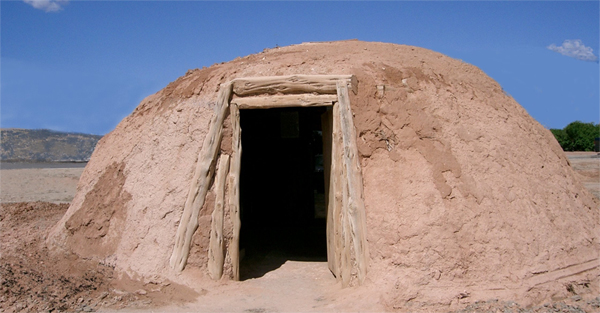
A hogan is the primary, traditional shelter of the Navajo people. It can be round, cone-shaped, multi-sided, or square; with or without internal posts; timber or stone walls and packed with earth in varying amounts or a bark roof for a summer house. Anything goes really.
The hogans of old are also considered pioneers of energy efficient homes: “Using packed mud against the entire wood structure, the home was kept cool by natural air ventilation and water sprinkled on the dirt ground inside. During the winter, the fireplace kept the inside warm for a long period of time and well into the night. This concept is called thermal mass.”
In 2001 the Hogan began seeing a revival with a joint-venture of a partnership involving the Navajo Nation, Northern Arizona University, the US Forest Service and other private and public partners.
5. The Burdei
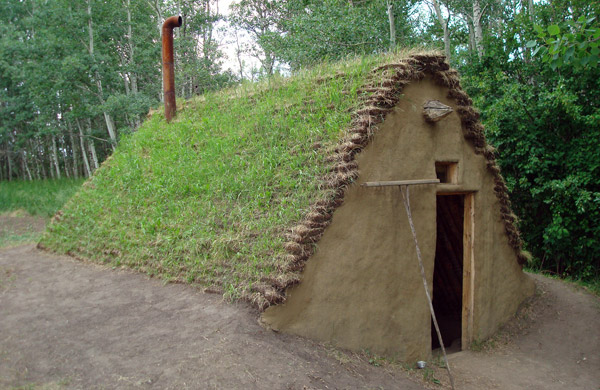
The burdei dates back as far as 6000 years and it’s a type of half-dugout shelter somewhat between a sod house and a log cabin, usually with a floor that’s 1 – 1.5 meters under ground level.
This type of shelter is native to the Carpathian Mountains and forest steppes of eastern Europe but has seen use in North America as well by many of the earliest Ukrainian Canadian settlers as their first home in Canada at the end of the 19th century and by Mennonites from Imperial Russia who settled in the Hillsboro region of Kansas.
The March 20, 1875, issue of the national weekly newspaper Frank Leslie’s Illustrated Newspaper described the structures:
…is the quaint brand-new village of Gnadenau, where there are some twenty small farmers, who have built the queerest and most comfortable cheap houses ever seen in the West, and with the least amount of timber, being merely a skeleton roof built on the ground and thatched with prairie-grass. They serve for man and beast, being divided on the inside by a partition of adobe..
6. The Barabara
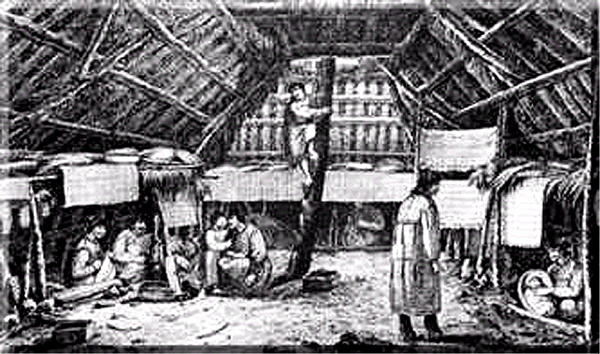
A barabara were the traditional shelter used by the Alutiiq people and Aleuts, the indigenous people of the Aleutian Islands. Similar to the Burdei, the barabara lay partially underground like an earth lodge or pit-house so they could withstand the high forces of wind in the Aleutian chain of islands.
7. The Clochán
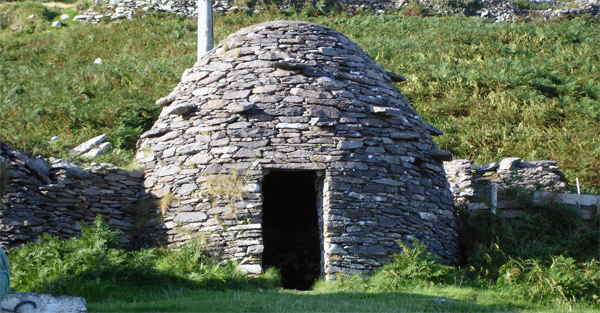
A Clochán is a dry-stone hut with a corbelled roof, commonly associated with the south-western Irish seaboard. Dry-stone is a building method where you use stones without any mortar to bind them together, and these structures get their strength from compressional forces and the interlocking of the stones.
Clocháns are most commonly round beehive huts and the walls are very thick, up to 1.5 metres. Some Clocháns are not completely built of stone, and may have had a thatched roof.
8. The Log Cabin
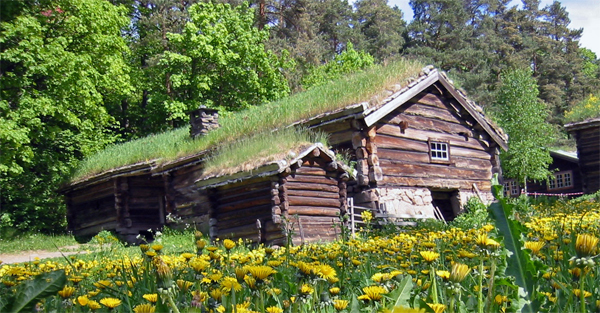
Some of the first log structures were built in Northern Europe many thousands of years ago, and they’re most commonly associated with Scandinavia and Eastern Europe.
They’re built out of logs laid on top of each other horizontally, with notches at both ends to form weather tight corners. The thick solid wood provide much better insulation over a timber frame covered with skins, boards, or shingles.
With suitable tools and logs, a log cabin can be erected (and disassembled) from scratch in days by a family but it can stand for potentially hundreds of years. In fact, not far from where I live you’ll find one of Sweden’s best preserved old farms with log structures built in the 1700’s that’s still in good condition.
Just as with the Clochán, the log cabin gets its structural integrity from compressional forces, and a log cabin tends to slightly compress as it settles over a few months or years.
9. The Long House
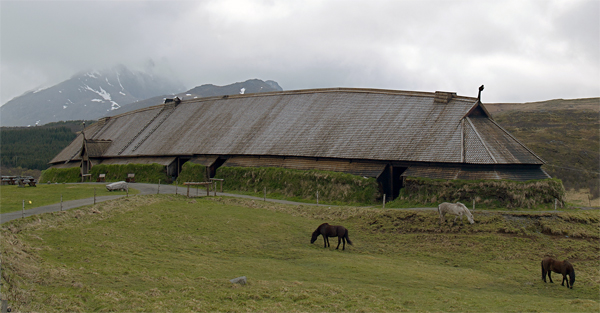 Reconstructed long house in the Vikingmuseum in Borg, Vestvågøy/Lofoten, Norway
Reconstructed long house in the Vikingmuseum in Borg, Vestvågøy/Lofoten, Norway
Longhouses have been built all over Europe, Asia and the Americas, but may be most commonly associated with the Iroquois tribes in North America, as well as with the Norse (better known as the Vikings) in Scandinavia.
They are built similarly to wigwams, with pole frames and bark covering. The main difference is that longhouses are much, much larger. Longhouses could be 200 feet long, 20 feet wide, and 20 feet high.
Smaller longhouses housed one or several multi-generational families while larger ones could house an entire clan– as many as 60 people!
10. The Bamboo House
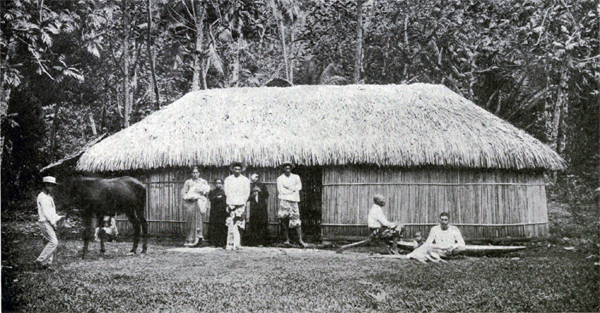
Tahitian bamboo house, c. 1902
Not a house design but rather an excellent building material, bamboo has a high strength-to-weight ratio useful for structures. It grows fast, it’s light-weight, and is a sustainable source of building material.
In its natural form, bamboo as a construction material is traditionally associated with the cultures of South Asia, East Asia and the South Pacific, to some extent in Central and South America,
11. The Pueblo
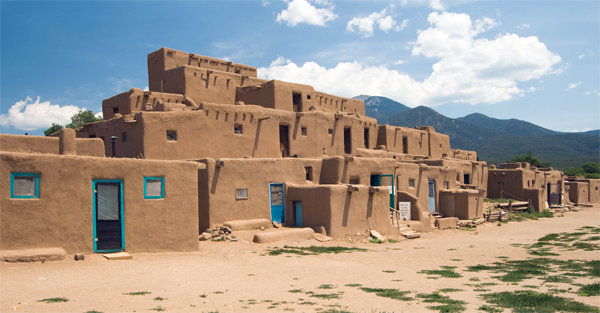
Pueblos are adobe house complexes used by the Pueblo Indians of the Southwest. They’re modular, multi-story houses made of adobe (clay and straw baked into hard bricks) or of large stones cemented together with adobe.
A whole pueblo housing comples can house an entire clan, with each adobe unit being home to one family much like a modern apartment. These houses can last for dozens of generations or longer in a warm, dry climate.
12. The Earthen House
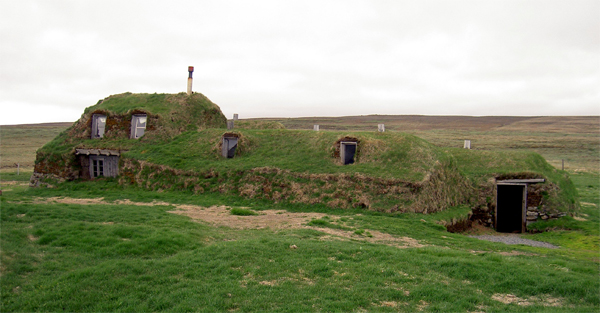
Turf house in Sænautasel, Iceland.
In the old days you’d find several types of earthen houses around the world, including Native American houses such as the Navajo hogans, Sioux earth lodges, pit houses of the West Coast and Plateau, as well as subarctic sod houses in Alaska, Canada and on Iceland in the Atlantic.
These are all semi-subterranean houses, sheltered by the surrounding earth on three or four sides with a roof on top. The main benefit of the earthen house is that you’re sheltered from both cold and wind by the earth, and if you face large windows towards the south you can potentially heat your home 100% passively from the sun.
13. The Igloo
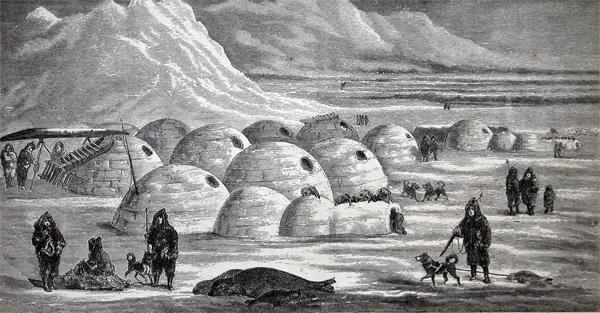
Igloos are snow houses used by the Inuit (Eskimos) of northern Canada. Igloos are dome-shaped shelters built from the snow, with large blocks of ice set in a spiral pattern and packed with snow to form the dome.
You’d be surprised how warm an igloo can get when it’s freezing outside! “On the outside, temperatures may be as low as −45 °C (−49 °F), but on the inside the temperature may range from −7 °C (19 °F) to 16 °C (61 °F) when warmed by body heat alone.” – Cornell University, 2003
14. The Yurt

The yurt is a portable shelter used by nomads in the steppes of Central Asia for at least three thousand years. You read that correctly. 3000 years. Wow.
Traditional yurts consist of an expanding wooden circular frame carrying a felt cover, and complete construction takes as little as 2 hours.
15. The Walipini
Not as ancient as the other shelters on this list, the walipini is still worth a mention because it’s such a simple yet brilliant idea, and it can be built for as little as $300.
A walipini is an underground greenhouse that lets you grow food year-round, and the idea was first developed in Bolivia, South America. It uses the same earth sheltering principles as many of the ancient house designs on this list.
What makes the walipini better than hoop houses and green houses? First, by locating the growing area 6’- 8’ underground you take advantage of the constant temperature of the earth below the frost level. Second, you can capture and store the daytime solar radiation in the surrounding earth which then radiates back into the greenhouse during the cold winter nights.
What Can We Learn?
You might not want to move into a tipi any time soon, but there are still a lot to learn from our ancestors.
These ancient house designs are better than modern homes in many aspects because they were adapted specifically for their environments. The homes in the Arizona desert looked much different from the homes in the Alaskan tundra, and nomadic people had different needs than agricultural people.
The point is that our ancestors were as One with their environments and co-existed with Nature. These people were native to the land, while modern man is more like an invasive species that does not know its place in Nature.
But, maybe most of all, these homes illustrate that the builders knew when enough was enough. They were clear about the purpose of building a home, i.e. to stay protected from the elements and have a safe place to sleep, rather than constantly expending their life energy on trying to build bigger and fancier homes.
Here’s a closing thought from Henry David Thoreau:
It is possible to invent a house still more convenient and luxurious than we have, which yet all would admit that man could not afford to pay for. Shall we always study to obtain more of these things, and not sometimes to be content with less? Shall the respectable citizen thus gravely teach, by precept and example, the necessity of the young man’s providing a certain number of superfluous glow-shoes, umbrellas, and empty guest champers for empty guests, before he dies? Why should not our furniture be as simple as the Arab’s or the Indian’s?
Why indeed?
If you liked this Walden Labs-exclusive post then sign up below for more like it, and together we’ll explore how to improve life on Planet Earth (and beyond) through experiments in self-reliance and decentralization.

